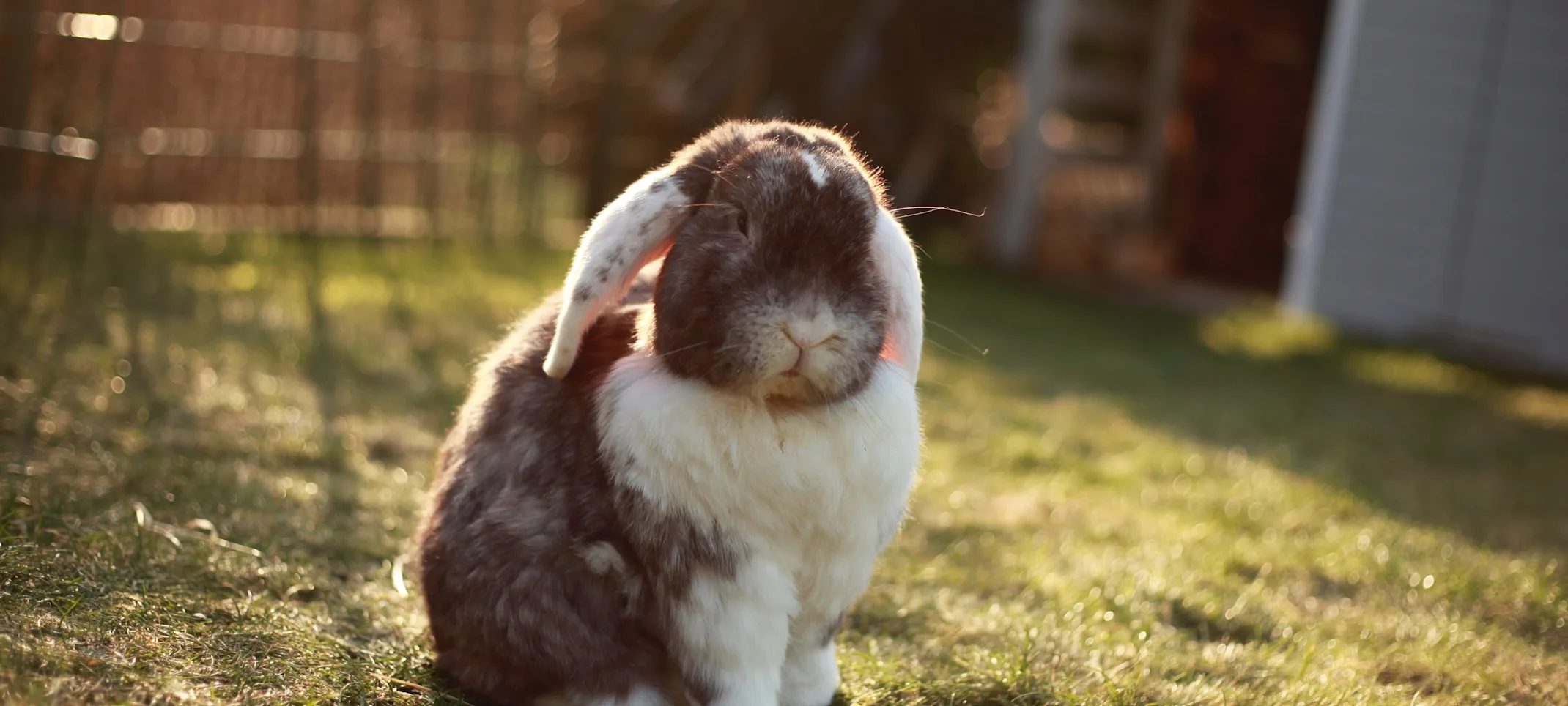Bowmanville Veterinary Clinic
I Found a Baby Rabbit
How to identify baby rabbits and help them.

How to identify baby rabbits – eastern cottontail rabbits are a common backyard visitor in southern Ontario. Young babies who are still in the nest have only a thin coat of grey fur and may not look much like adult rabbits. However, their unique ground nests are helpful in identifying them. Baby cottontails often have a white spot on their forehead, short tails and their back legs are longer than their front legs. As they get older and are close to leaving the nest they look like small versions of their parents with long ears, brindle fur (a mix of brown and grey) and a patch of white on the underside of their tail.
What is normal for baby rabbits?
Typically, a mother cottontail digs a shallow hole in the ground where she gives birth to her babies (sometimes she will give birth in planters or woodchips but not as often). She then covers them completely with grass and tufts of her own fur. The mother visits the nest a few times between dusk and dawn, quickly nurses her babies, covers them up again, and then hops away so as not to attract predators to the nest.
Cottontails grow up quickly! They may start to leave the nest as early as two weeks of age and are completely independent at about four weeks. As they approach independence, young cottontails begin to leave the nest more frequently and abandon it altogether once they are fully weaned. At this stage they are not much bigger than a hamster.
Warning signs: How to tell if a baby rabbit needs help.
It appears injured
It has had direct contact with a dog or cat
The nest has been destroyed or dug up
It is found in an exposed area, not hiding from people
It is out of the nest but its eyes are still closed or it cannot hop around well
It is out of the nest but huddled together with its siblings
There is no nest covering (grass and fur) on top of the babies and they are exposed
Before containing babies in these situations, seek further advice from a wildlife rehabilitator.
Is the mother caring for her babies?
If none of the warning signs apply, then the baby does not likely need help. However if you have found a rabbit nest and you are not certain that the mom is caring for her babies, there is a simple test you can do to know for sure:
Lay two long pieces of string in an “X” pattern across the covered nest. Rabbits are very sensitive to human scent, so wear garden gloves that have been rubbed in grass or soil to help minimize scent when you are setting up the test. Rabbits are often scared of new things so make sure not to place anything else around or over the nest. Leave the string in place overnight and check in the morning. If the “X” pattern has been clearly disturbed but the babies are still covered and in the nest, it means their mother has visited the nest and is still caring for them. In this case, remove the string and leave the nest alone. If the “X” pattern is undisturbed, the babies will likely need to be contained and taken to a wildlife rehabilitator; however you should call and discuss the situation with the rehabilitator first in order to confirm that they do need help.
If the baby does need help…Contact a wildlife rehabilitator right away! Orphaned baby rabbits need specialized care and babies that show any sign of injury need immediate medical attention, Wildlife rehabilitators can ensure baby rabbits have the proper diet, access to medical care and provide an appropriate living environment that mimics their natural habitat. If you have to leave a message for a wildlife rehabilitator, contain the baby in a closed cardboard box and keep it in a quiet place away from people and pets.
Provide the baby with a heat source. The best thing to use is a heating pad set on low under half of the box, because it provides a nice consistent source of heat. If you don’t have a heating pad, you can use chemical hand warmers (commercially called “Hot Paws” or similar). Tuck these under the towel in the box with the rabbit. As a last resort (because water cools quickly), you can fill a plastic bottle with hot tap water. Wrap the bottle in a towel and place it in the box with the baby.
Baby rabbits have very sensitive stomachs and improper food or force feeding can cause them harm. Please do not feed then unless instructed to do so by a wildlife rehabilitator.
